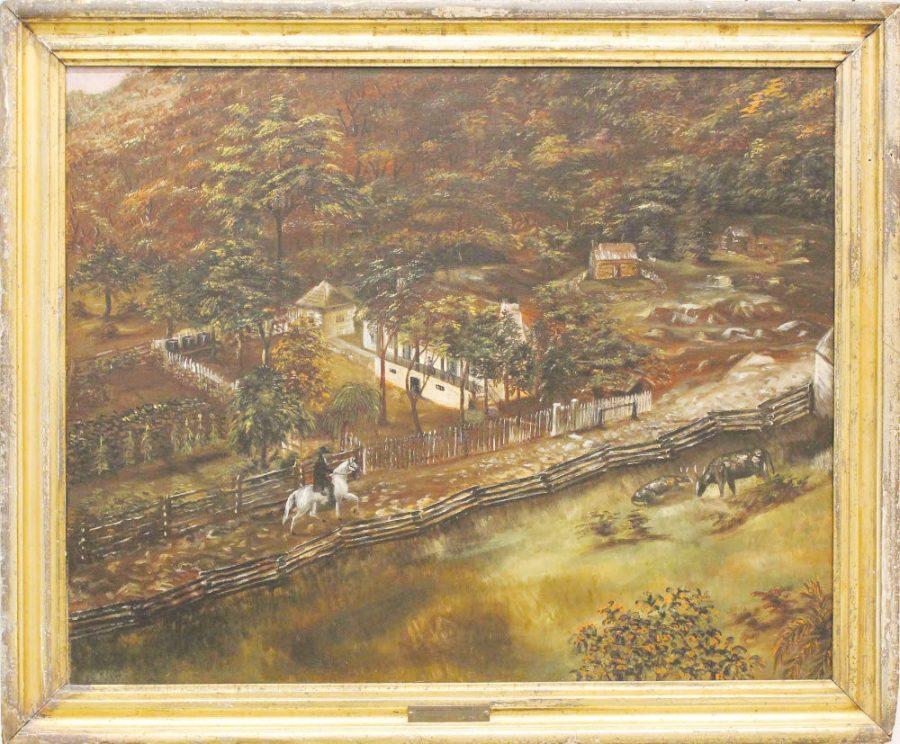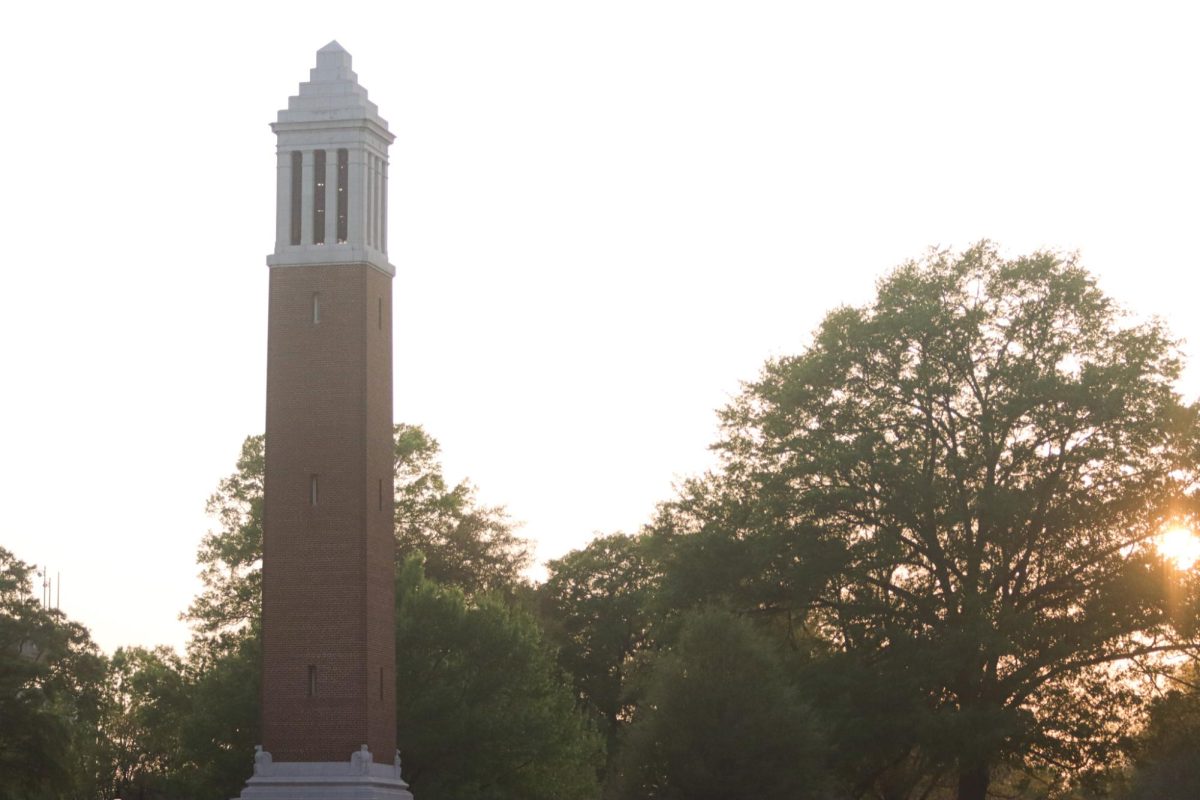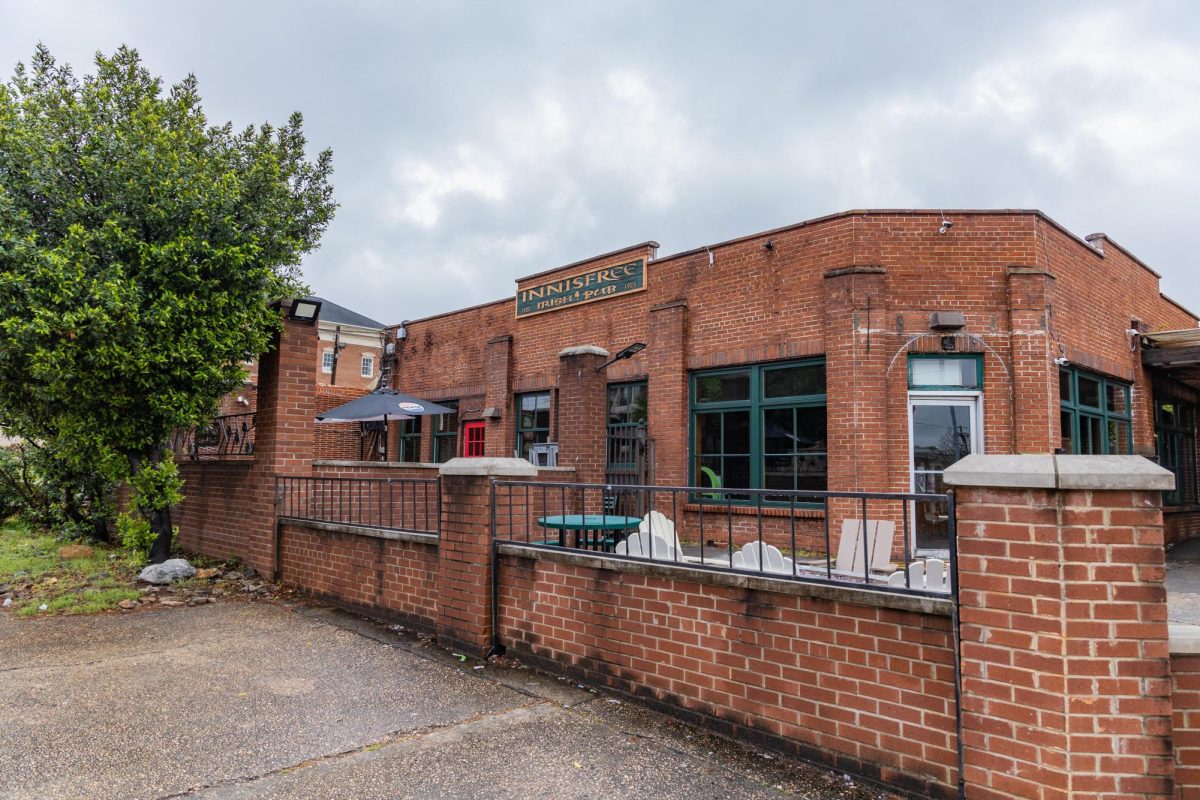A 19th century painting titled “Mountain Home of Thomas Martin” was recently rediscovered in the home of a former UA professor and restored to its original state by the College of Arts and Sciences.
The oil painting by artist Henry Strode depicts the home built by John Martin, Thomas Martin’s father, in 1815 on Huntsville’s Monte Sano Mountain, said Thomas Hutchens, library assistant in the Heritage Room of the Huntsville Public Library.
Hutchens said the date on the painting reads 1820, but the artist was not born until around the 1830s, so he believes it shows how the artist said he thinks Monte Sano looked in the 1820s.
“It’s a very good depiction of how life was like in the early 19th century in Madison County and Monte Sano and Northern Alabama,” Hutchens said.
The Martin family moved to Huntsville from Fairfax, Va. in 1808 and began construction of a home on 80 acres of land on Monte Sano, Hutchens said.
Hutchens said the artist and the Martin family were connected through his brother, the Rev. Eugene Strode, the first Baptist minister in Huntsville, who married Sallie Martin, one of John Martin’s three daughters.
Jane Barr, president of the Monte Sano Historical Association, said the home was probably one of the first built on the mountain and nearly as old as the city of Huntsville.
Barr said there was a newspaper article in 1955, when Huntsville celebrated its sesquicentennial, with a write-up and a black and white picture of the Martin home. This was also when the public first saw the painting.
Also in the paper, there was an article from Crane Plumbing magazine about the home, Barr said. According to that article, the Martin home was the first home in the country to have an indoor bathtub with plumbing.
Barr said the plumbing was possible because the house was located near Cold Springs and hollowed cedar logs were used to bring the water to the main house and the milk house where milk and cheese were stored.
John Martin sold the home and the 80 acres on Monte Sano to a group of men who were planning to establish the community of Vitduta, which was on Alabama maps until around the 1930s, Barr said.
“I think it was one of those paintings that just went around from family to family,” Barr said. “The fact that it was kept for so long is really remarkable because so often things get thrown out. That painting was actually kept. Especially having gone out west and back again, I think that was very remarkable.”
Don Hays, executive assistant to the dean for external affairs, said the painting was discovered several months ago in the home of the late Hudson Strode, a former English professor at the University.
Hays said Strode graduated from the University in 1913 and earned his master’s in English from Columbia University before returning to Alabama as an associate professor to teach Shakespeare.
Upon his death in 1976, Hays said Strode left his home in Cherokee Hills and possessions to the University of Alabama College of Arts & Sciences. The painting has remained in the home ever since.
“To him, I think he just thought it was a family heirloom,” Hays said. “He must have known it was special, but probably for family reasons instead of artistic reasons.”
Hays said when the painting was discovered, Bob Olin, the dean of the College of Arts & Sciences asked him to have it appraised. The appraiser suggested the painting be professionally restored.
After three months of restoration at the Atlanta Art Conservation Center, where 200 years of grime, dirt and grease were painstakingly cleared, “Mountain Home of Thomas Martin” was reappraised for $100,000.
“It came back to life,” Hays said.
The painting was debuted at a reception for alumni supporters three weeks ago in Huntsville, Hays said. The people of Huntsville asked Olin if the painting could remain in Huntsville so more people could enjoy it.
The painting will be on display at the Huntsville Museum of Art until May 1 and will return to the University of Alabama on May 2, Hays said. Olin has not made a decision on plans for the painting when it returns.
“It’s important not only to the University of Alabama, but to the people of the state of Alabama, because, as the appraiser told us, it’s a rare glimpse into 1820 Alabama,” Hays said.









